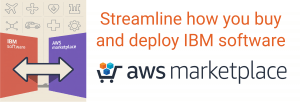SAFe Value Stream and ART Identification Workshop
During this one-day workshop, you will learn how to identify your organization’s value streams and then explore and test different potential Agile Release Train (ART) designs that are optimized for the flow of value. With this understanding, we will help you pick one value stream and one ART to serve as the starting vehicle for the journey. Next, you will learn how to create a plan to launch the ART and develop a roadmap for launching more ARTs and value streams.
Agile Scrum Boot Camp & Simulation
The Agile Scrum Boot Camp & Simulation will teach participants key Agile principles and Scrum practices and how to implement them into an existing or future software project as soon as they are back on the job. The training will cover common obstacles and how to avoid them, for example, recognizing problems in a sprint and handling situations where teams revert back to traditional approaches.
Patterns for Agile Hardware-Inclusive Systems
While the roots of Agile Development and the Scaled Agile Framework (SAFe) are in software development, the principles of Lean and Agile are generally applicable for Hardware/Product Development as well as Embedded Software. This ‘trifecta’ of software, embedded code and hardware constitutes the majority of today’s most complex systems… but hardware teams are often uncertain how to best apply their craft as part of an agile team.
IBM Rational Collaborative Lifecycle Management (CLM) Deployment Package for Traditional (Waterfall) Process
This service primarily benefits organizations (or programs) using traditional or waterfall processes and who are new to CLM, or those who are looking to accelerate its successful deployment.
IBM Rational Collaborative Lifecycle Management (CLM) Deployment Package for Scaled Agile Framework (SAFe)
This service primarily benefits organizations (or programs) using traditional or waterfall processes and who are new to CLM, or those who are looking to accelerate its successful deployment in combination with SAFe.
Systems Engineering, MBSE & SAFe Workshop
This workshop teaches future workshop coaches and participants how to incrementally build system specifications that define system context, behavioral response to stimulus, structural design and interfaces. And it teaches the mechanics of running a workshop through a lengthy simulation and how to perform workshops as part of the regular agile development flow.
Scrum Overview
Scrum is one of several Agile processes available today. Scrum’s agile project management approach gives you the ability to quickly develop working software that meets business needs. In Scrum, teams work in cycles called “Sprints” to produce production-quality software based on business priorities using an empirical, adaptive approach. This course is a high level introduction to this approach’s values and key practices.
SAFe® DevOps
This course covers the hands-on skills needed to accelerate time-to-market by improving the flow of value through the SAFe Continuous Delivery Pipeline with DevOps. The course covers the principles and practices of DevOps in SAFe. Attendees will learn how to plan and implement DevOps capabilities that will significantly improve quality, productivity, time-to-market, and business results.
SAFe 5.0 for Teams
Build the skills needed to become a high-performing team member of an Agile Release Train (ART)—and learn how to collaborate effectively with other teams—by becoming a SAFe® 5 Practitioner (SP). During this two-day course, attendees will gain an in-depth understanding of the ART, how it delivers value, and what they can do to effectively perform their role using Scrum, Kanban, and XP.
SAFe® 5.0 Product Owner / Product Manager with SPOPM Certification
This two-day interactive workshop begins with the principles of SAFe, Lean thinking tools, Agile development practices at scale, and an overview of the Scaled Agile Framework. Teams will then learn the Product Manager and Product Owner roles in the enterprise, how to manage the enterprise backlog, delivering features, agile requirements, the events within SAFe, and finally, stakeholder management.


